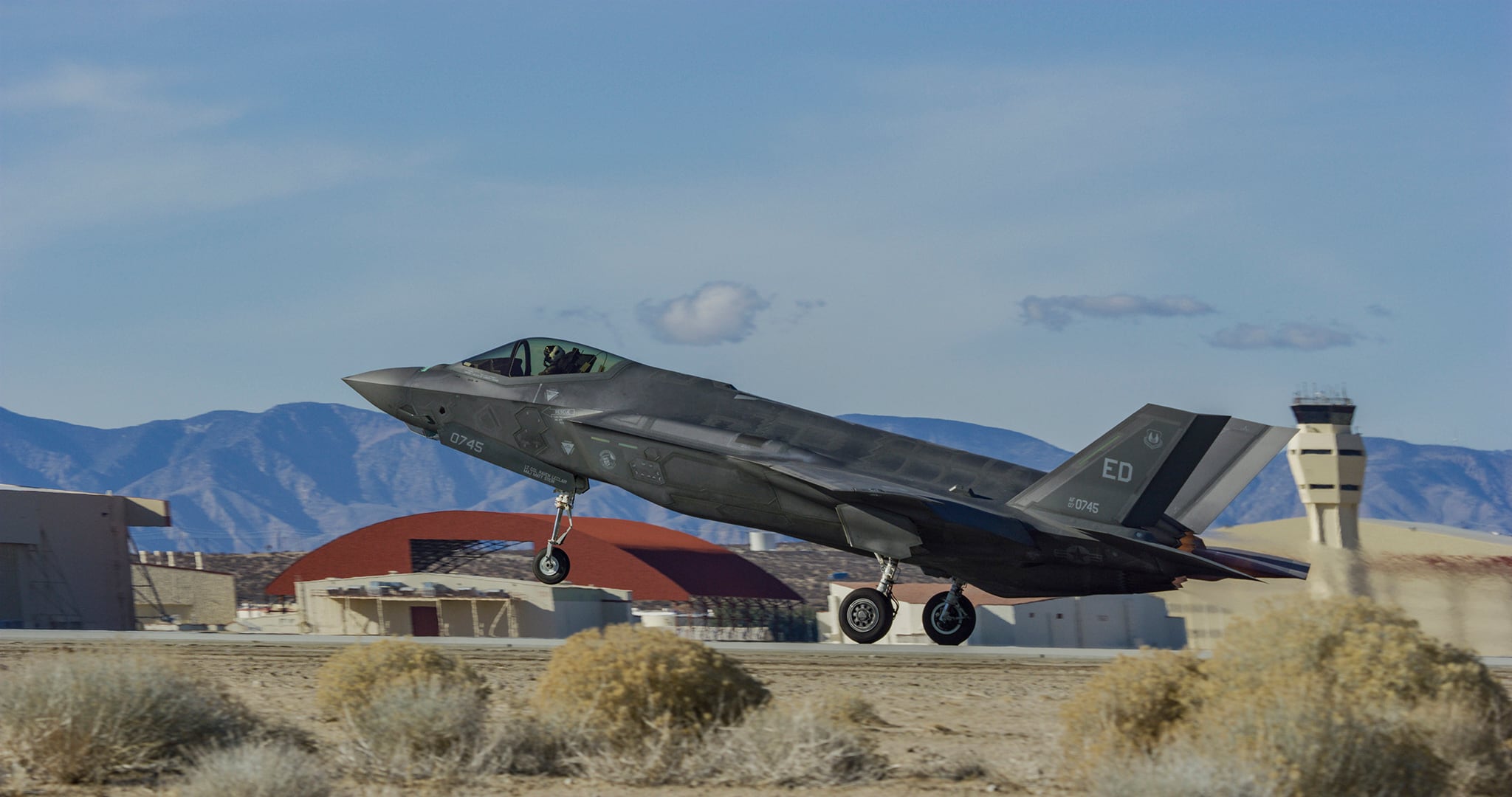WASHINGTON — Lockheed Martin may not be able to deliver as many F-35s as it had hoped this year due to delays involving the fighters’ upcoming Technology Refresh 3 upgrades.
Lockheed chief executive Jim Taiclet and chief financial officer Jay Malave said in a Tuesday earnings call with investors that the company now expects F-35 deliveries to be lower than it originally predicted because of software maturation issues with TR-3 and delays in delivering TR-3′s hardware.
Lockheed said in December 2022 that it expected to deliver between 147 and 153 F-35s this year as well as in 2024.
Malave said the company will “refine the impact” as the year continues, but Taiclet downplayed the magnitude of the delivery drop, saying it would be a “fraction” of total 2023 deliveries.
Taiclet also said the company expects the potential delivery delay to have “little to no” effect on the company’s aeronautics revenues or profits for 2023.
TR-3 is the name for a slate of hardware and software upgrades for the F-35 that is intended to give the jet better displays computer memory and processing power. The update is needed before the F-35 can receive a more wide-ranging modernization known as block 4, which will include new sensors, the ability to carry more long-range precision weapons, better data fusion, and updated electronic-warfare capabilities.
But TR-3 is slipping behind schedule. Lt. Gen. Michael Schmidt, the F-35′s program executive officer, told lawmakers March 29 that the upgrade is now expected to arrive somewhere between December 2023 and April 2024 — up to a year later than the original expected due date of April 2023.
The delay drew the ire of Rep. Rob Wittman, R-Va., chairman of the House Armed Services tactical air and land forces subcommittee, who said “the program has to do better.” Wittman also said TR-3 is running about $700 million over budget.
In Tuesday’s earnings call, Taiclet acknowledged the delays, but said Lockheed is “in the very late innings of fully implementing this Tech Refresh 3.”
Taiclet said flight tests of the TR-3-enabled F-35, which began in January, could be wrapped up sometime between October and December 2023. Lockheed will also have to review the test results, work with the government to ensure all parties are ready to start implementing TR-3, and start folding the new software loads into the F-35′s production system, he said.
But knitting together the multiple components that make up TR-3 is a “pretty intricate, fairly leading-edge [task] for the aerospace industry to accomplish,” Taiclet said.
“I would consider this [an] extremely high degree of difficulty dive, and we’re going to make sure that it’s done right, and we can produce at rate in our lot 15,” Taiclet said.
Schmidt told lawmakers in the March 29 hearing that the development of TR-3′s hardware fell behind and initial production was slow. But, he said, the hardware is now more reliable and passing flight safety requirements. Software integration also lagged, Schmidt said.
The next software drop for TR-3, which Schmidt told lawmakers would come in about a month, will be crucial, and it “unleashes most of the tactical capabilities in there so we can truly do a flight test for score across a large spectrum of the requirements.”
Schmidt also told reporters at the Navy League’s Sea Air Space conference April 3 that he’s concerned about the infrastructure available to conduct TR-3 flight tests. Those test aircraft tend to be some of the oldest F-35s, he said, and their age sometimes hinders the Air Force’s ability to conduct tests.
“When you see the issues, why they didn’t fly today, it’s usually not a TR-3 issue, it’s an old-airplane issue,” Schmidt said. “We’re trying to increase our flight test capacity.”
Schmidt said the Air Force had conducted 25 flight tests of TR-3-enabled fighters by the end of March.
Lockheed reported sales of about $15 billion and profits of about $1.7 billion in the first quarter of 2023, each roughly the same as a year earlier. Lockheed’s quarterly aeronautics sales of $6.4 billion and missiles and fire control sales of nearly $2.5 billion were each slightly higher than the first quarter of 2022, when those divisions recorded sales of nearly $6.3 billion and $2.4 billion, respectively.
Taiclet pointed to the U.S. military’s proposed 2024 budget, which requested funds to buy 83 F-35s for the Air Force, Navy and Marine Corps, and Canada’s January announcement that it would buy 88 F-35As to replace its retiring CF-18s, as a sign that demand for the fighter remains strong internationally.
Stephen Losey is the air warfare reporter for Defense News. He previously covered leadership and personnel issues at Air Force Times, and the Pentagon, special operations and air warfare at Military.com. He has traveled to the Middle East to cover U.S. Air Force operations.








